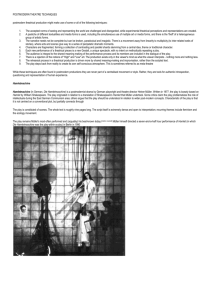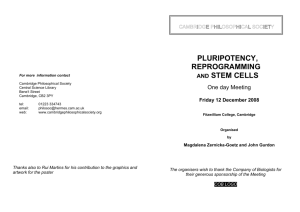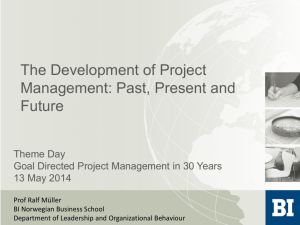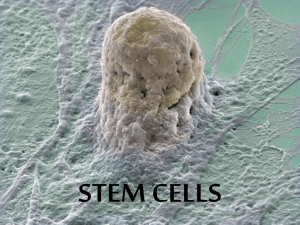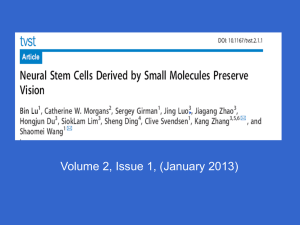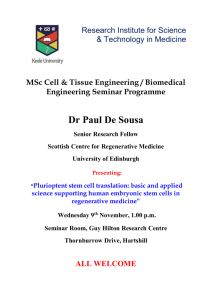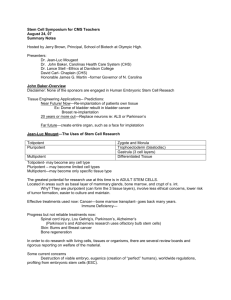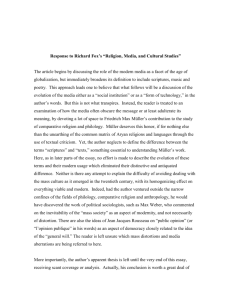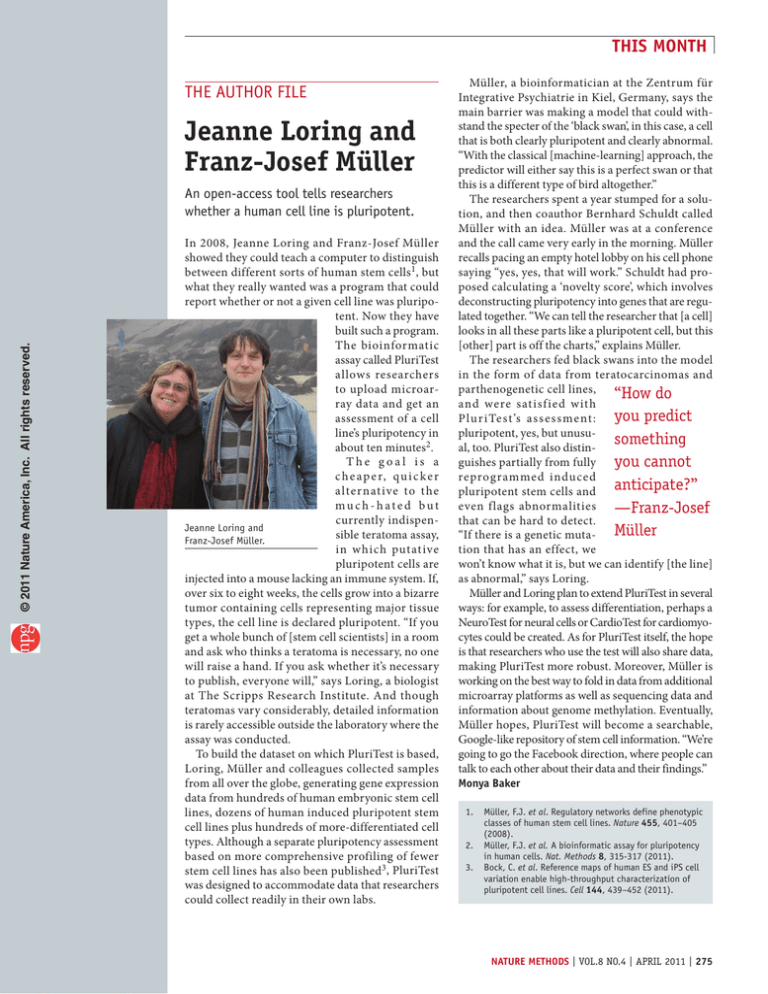
this month
THE AUTHOR FILE
Jeanne Loring and
Franz-Josef Müller
© 2011 Nature America, Inc. All rights reserved.
An open-access tool tells researchers
whether a human cell line is pluripotent.
In 2008, Jeanne Loring and Franz-Josef Müller
showed they could teach a computer to distinguish
between different sorts of human stem cells1, but
what they really wanted was a program that could
report whether or not a given cell line was pluripotent. Now they have
built such a program.
The bioinformatic
assay called PluriTest
allows researchers
to upload microarray data and get an
assessment of a cell
line’s pluripotency in
about ten minutes2.
The goal is a
c h e a p e r, q u i c k e r
alternative to the
much-hated but
currently indispenJeanne Loring and
sible teratoma assay,
Franz-Josef Müller.
in which putative
pluripotent cells are
injected into a mouse lacking an immune system. If,
over six to eight weeks, the cells grow into a bizarre
tumor containing cells representing major tissue
types, the cell line is declared pluripotent. “If you
get a whole bunch of [stem cell scientists] in a room
and ask who thinks a teratoma is necessary, no one
will raise a hand. If you ask whether it’s necessary
to publish, everyone will,” says Loring, a biologist
at The Scripps Research Institute. And though
teratomas vary considerably, detailed information
is rarely accessible outside the laboratory where the
assay was conducted.
To build the dataset on which PluriTest is based,
Loring, Müller and colleagues collected samples
from all over the globe, generating gene expression
data from hundreds of human embryonic stem cell
lines, dozens of human induced pluripotent stem
cell lines plus hundreds of more-differentiated cell
types. Although a separate pluripotency assessment
based on more comprehensive profiling of fewer
stem cell lines has also been published3, PluriTest
was designed to accommodate data that researchers
could collect readily in their own labs.
Müller, a bioinformatician at the Zentrum für
Integrative Psychiatrie in Kiel, Germany, says the
main barrier was making a model that could withstand the specter of the ‘black swan’, in this case, a cell
that is both clearly pluripotent and clearly abnormal.
“With the classical [machine-learning] approach, the
predictor will either say this is a perfect swan or that
this is a different type of bird altogether.”
The researchers spent a year stumped for a solution, and then coauthor Bernhard Schuldt called
Müller with an idea. Müller was at a conference
and the call came very early in the morning. Müller
recalls pacing an empty hotel lobby on his cell phone
saying “yes, yes, that will work.” Schuldt had proposed calculating a ‘novelty score’, which involves
deconstructing pluripotency into genes that are regulated together. “We can tell the researcher that [a cell]
looks in all these parts like a pluripotent cell, but this
[other] part is off the charts,” explains Müller.
The researchers fed black swans into the model
in the form of data from teratocarcinomas and
parthenogenetic cell lines, “How do
and were satisfied with
Plu r i Te st’s ass e ss me nt : you predict
pluripotent, yes, but unususomething
al, too. PluriTest also distinguishes partially from fully you cannot
reprogrammed induced
anticipate?”
pluripotent stem cells and
even flags abnormalities —Franz-Josef
that can be hard to detect.
“If there is a genetic muta- Müller
tion that has an effect, we
won’t know what it is, but we can identify [the line]
as abnormal,” says Loring.
Müller and Loring plan to extend PluriTest in several
ways: for example, to assess differentiation, perhaps a
NeuroTest for neural cells or CardioTest for cardiomyocytes could be created. As for PluriTest itself, the hope
is that researchers who use the test will also share data,
making PluriTest more robust. Moreover, Müller is
working on the best way to fold in data from additional
microarray platforms as well as sequencing data and
information about genome methylation. Eventually,
Müller hopes, PluriTest will become a searchable,
Google-like repository of stem cell information. “We’re
going to go the Facebook direction, where people can
talk to each other about their data and their findings.”
Monya Baker
1. Müller, F.J. et al. Regulatory networks define phenotypic
classes of human stem cell lines. Nature 455, 401–405
(2008).
2. Müller, F.J. et al. A bioinformatic assay for pluripotency
in human cells. Nat. Methods 8, 315-317 (2011).
3. Bock, C. et al. Reference maps of human ES and iPS cell
variation enable high-throughput characterization of
pluripotent cell lines. Cell 144, 439–452 (2011).
nature methods | VOL.8 NO.4 | APRIL 2011 | 275

